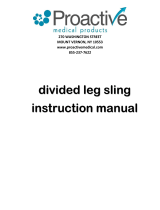Graham Field Personal Lift LF1030
The Graham Field Personal Lift LF1030 is a versatile and easy-to-use patient lift designed to assist with the safe and comfortable transfer of individuals who have difficulty moving independently. With a maximum weight capacity of 400 pounds, the LF1030 is suitable for a wide range of users.
Key Features:
- Hydraulic or electric operation: Choose between the LF1030 Hydraulic Patient Lift or the LF1040 Electric Patient Lift to suit your specific needs.
- Adjustable height: The lift's adjustable height allows for easy transfers from beds, chairs, wheelchairs, and commodes.
Graham Field Personal Lift LF1030
The Graham Field Personal Lift LF1030 is a versatile and easy-to-use patient lift designed to assist with the safe and comfortable transfer of individuals who have difficulty moving independently. With a maximum weight capacity of 400 pounds, the LF1030 is suitable for a wide range of users.
Key Features:
- Hydraulic or electric operation: Choose between the LF1030 Hydraulic Patient Lift or the LF1040 Electric Patient Lift to suit your specific needs.
- Adjustable height: The lift's adjustable height allows for easy transfers from beds, chairs, wheelchairs, and commodes.




















-
 1
1
-
 2
2
-
 3
3
-
 4
4
-
 5
5
-
 6
6
-
 7
7
-
 8
8
-
 9
9
-
 10
10
-
 11
11
-
 12
12
-
 13
13
-
 14
14
-
 15
15
-
 16
16
-
 17
17
-
 18
18
-
 19
19
-
 20
20
-
 21
21
-
 22
22
-
 23
23
-
 24
24
Graham Field LF1030 User manual
- Type
- User manual
- This manual is also suitable for
Graham Field Personal Lift LF1030
The Graham Field Personal Lift LF1030 is a versatile and easy-to-use patient lift designed to assist with the safe and comfortable transfer of individuals who have difficulty moving independently. With a maximum weight capacity of 400 pounds, the LF1030 is suitable for a wide range of users.
Key Features:
- Hydraulic or electric operation: Choose between the LF1030 Hydraulic Patient Lift or the LF1040 Electric Patient Lift to suit your specific needs.
- Adjustable height: The lift's adjustable height allows for easy transfers from beds, chairs, wheelchairs, and commodes.
Ask a question and I''ll find the answer in the document
Finding information in a document is now easier with AI
Related papers
-
Graham Field LF1031 / LF1041 User manual
-
Graham Field LF1031FP User manual
-
Graham Field LF1050 User manual
-
Graham Field LF1040 Owner's manual
-
Graham Field LF2020 Easy Lift STS User manual
-
Graham Field GF13606 User manual
-
Graham Field DSLR14 User manual
-
Graham Field LF1007 User manual
-
Graham Field HOM2101 User manual
-
Graham Field LUMEX 700175C-2 User manual
Other documents
-
Knoll Generation Assembly Instructions
-
Drive Medical 13012 Owner's manual
-
Drive Medical 13220M Owner's manual
-
Handy Living 340C2-FLW47-269 Operating instructions
-
Handy Living 340C2-HVN16-274 Installation guide
-
Invacare 1060539 User manual
-
Invacare 9800A User manual
-
 Proactive Medical 30100 User manual
Proactive Medical 30100 User manual
-
Drive Medical 13023 Owner's manual
-
Drive Medical 13023SV Owner's manual
























